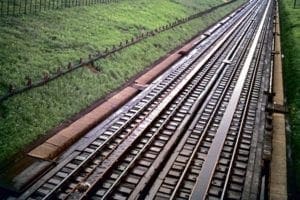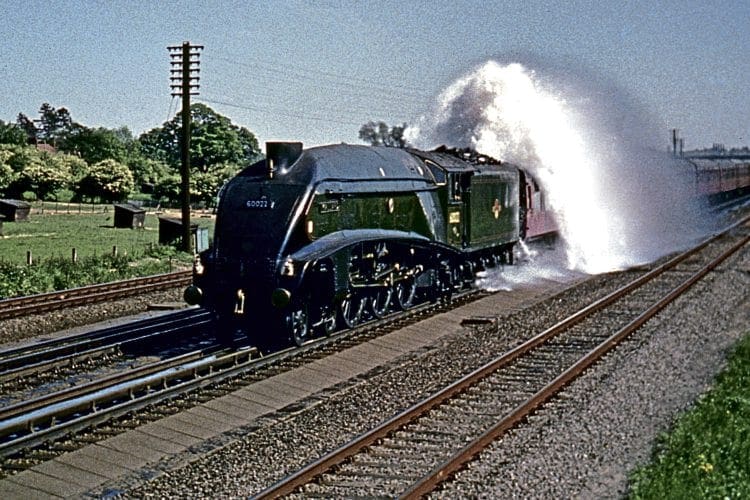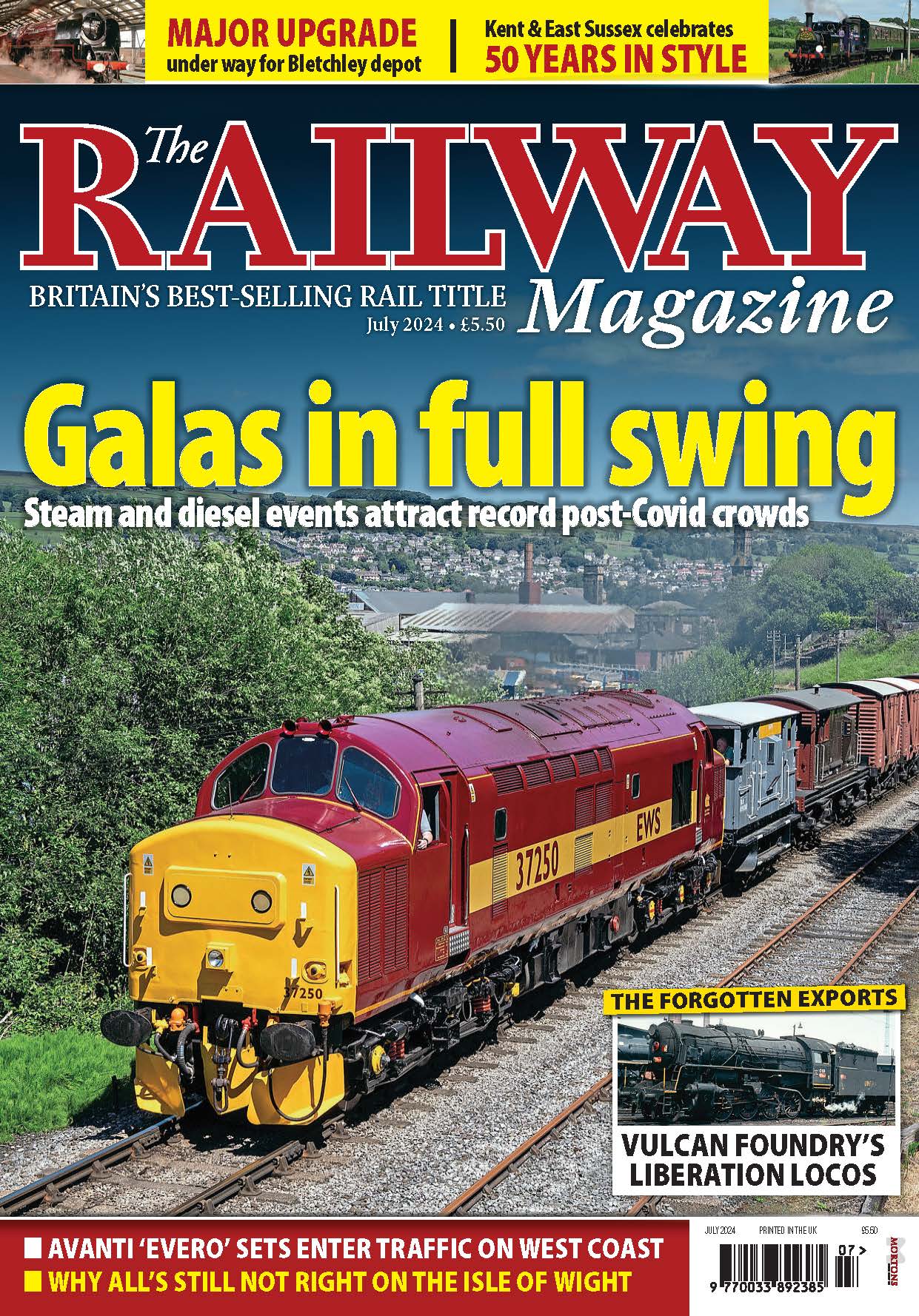It was a relatively simple invention yet it revolutionised long-distance train travel for more than a century. Consultant Editor Nick Pigott dips into the subject of water troughs.
IT’S a hot summer’s day in the steam era and you are relaxing in a Pullman car speeding along the East Coast Main Line. After a while, a member of the catering crew leans across your table and gently slides the window shut. Apologising for disturbing you, he then does the same on the other side of the coach.
A couple of minutes later, your view of the passing scenery vanishes as the train appears to plunge into the mother of all rainstorms. Torrents of water lash against the windows and a passenger sitting a couple of seats behind you cries out as a few stray drops spatter her expensive new dress.

Out on the lineside, however, a lone photographer is clenching his fists in delight. He has captured that most spectacular of images – a tender overflow on a set of water troughs.
Monthly Subscription: Enjoy more Railway Magazine reading each month with free delivery to you door, and access to over 100 years in the archive, all for just £5.35 per month.
Click here to subscribe & save
Such dramatic incidents took place whenever a fireman’s misjudgement or a mechanical fault prevented a water scoop from being withdrawn at the optimum moment. Not all passengers had the benefit of a steward or a conscientious guard to save them from a soaking, of course, and for the vast majority it was a case of finding out the hard way and learning from experience.
Few would have spared a thought for the driver and fireman, assuming their position ahead of the tender would keep them dry. Not always… a major tender overflow on a big engine at speed could sometimes cause chaos on the footplate as gallons of water cascaded over the coal, often bringing a pile of it down into the cab. It was not unknown for crews to find themselves with a clear-up on their hands as they endeavoured to keep the train on schedule.
Troughs were very much a British phenomenon and there were more than 140 of them altogether, sited at some 60 different locations.

In contrast, only two other nations – France and the USA – adopted them and only in a limited way, which is curious when it is considered how successful they were and how they revolutionised long-distance travel by enabling expresses to run non-stop for hundreds of miles.
They were a product of the extremely innovative mind of John Ramsbottom, locomotive superintendent of the London & North Western Railway, who was also responsible for the invention of the split piston ring, the sight-feed lubricator, the ‘Velocimeter’ speed recorder, and the safety valve that bears his name.
Read more in the May issue of The RM – on sale now!




